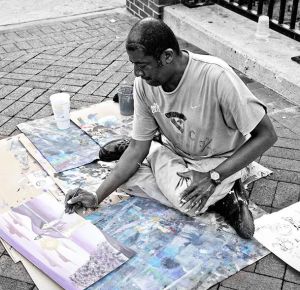The foster care system often condemns young adults to lives full of hardships that other young adults do not have to face.
That is what freshmen in ECG 100 with Dr. Michelle Filling-Brown, associate professor of English, earn through taking an in-depth look at the system and the lives it has touched.

“I believe that with knowledge comes power, and by continuing to be educated and raising awareness about aging out can only help the foster youth that fall victim to homelessness, drug addiction, human trafficking, prostitution, gang violence, and so much more,” said freshman Lauren Weisbecker who is currently in the class.
Imagine at only 18 years of age you have no adult in your life who can pay for your food and shelter you so you drop out of school to get a minimum wage job in a run-down corner store. You cannot really afford a place to live, food, or health care and there is no one supporting you besides yourself unlike other 18-year-olds that can rely on family to ensure their basic needs are still met.
The stories of youth facing the troubles of foster care vary but according to Filling-Brown their stories often include being separated from siblings, being placed in multiple homes, and having trouble keeping up in school.
Through her work with the Pennsylvania Youth Advisory Board she is able to share with her class the stories from people who have suffered through the flaws in the foster care system.
In her ECG 100, class Filling-Brown also teaches students about how the foster care system is not running the way it was intended to work.
“The biggest problem is that the foster care system is not supposed to be a permanent solution, but many youth languish within the system for years,” said Filling-Brown.
According to the website for the Covenant House, whose international president, Kevin Ryan, was the most recent Executive-in-Residence on campus, 20,000 young adults outgrow the program and are forced to find a way to fend for themselves.
About one-third of these young adults never finish high school and become susceptible to lives of crime and poverty with almost 40 percent of them facing homelessness at some point in time.
There are many more statistics that the Covenant House provides on their website explaining the high rates of crime, lack of health care, and welfare dependency that marks the life of a person that out grew the foster care system.
Classes such as Filling-Brown’s ECG 100 are extremely important to spreading awareness towards the issue and enacting change for the teens in foster care facing homelessness.
“My ECG 100 class opened my eyes to the fundamentals and hardships of the foster care system,” said Weisbecker. “Whether reading articles and writing responses, or meeting and hearing the stories of foster youth going through the aging out process, the course has been fascinating.”
Even with all of the negative issues regarding the foster care system, it has seen some successes in recent years. One that Dr. Filling-Brown mentioned was the Fostering Connections to Success Act of 2008 which helps kids receive federal support as part of the foster care system until the age of 21.
Filling-Brown’s cousin Mikey was also a success story for the foster care system. She explained that “he is currently serving in the military and recently got married, so despite struggles in his younger years he is doing well now. Ultimately, he’s a success story because he found permanency and never aged out of the system.”
@samjacobspa



